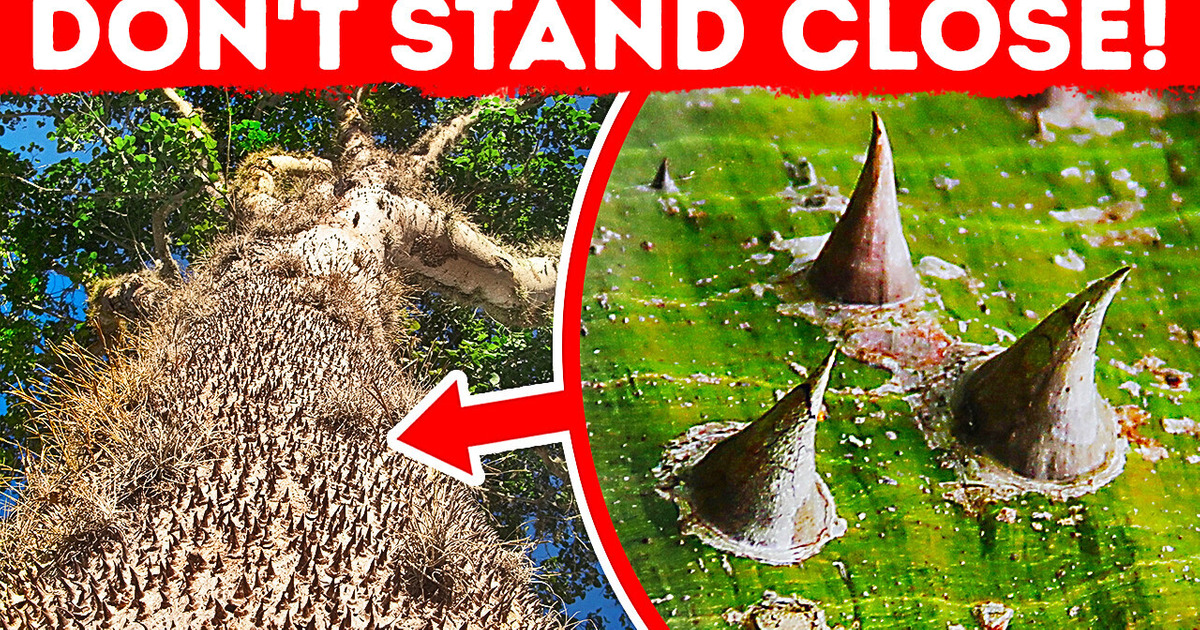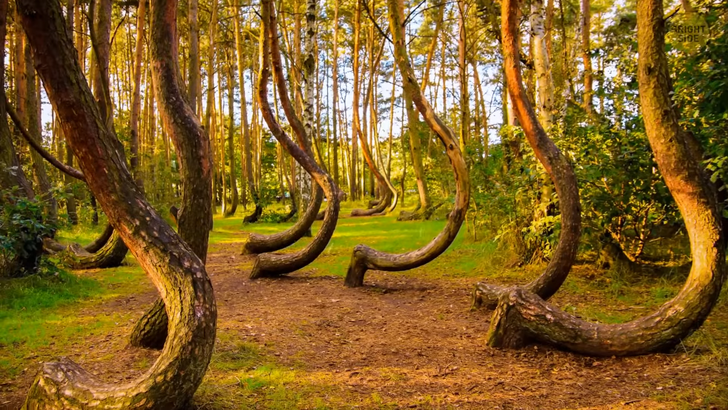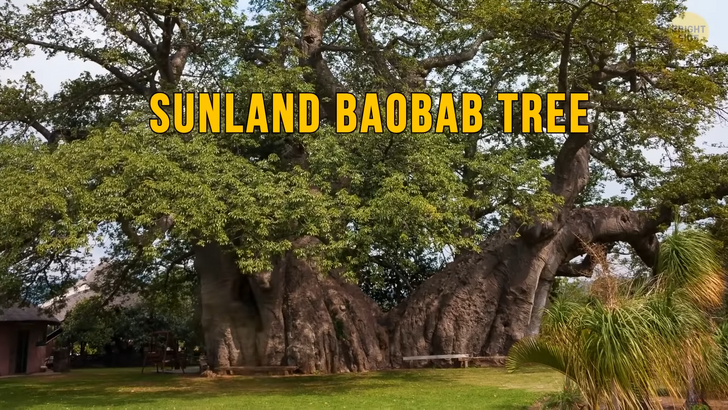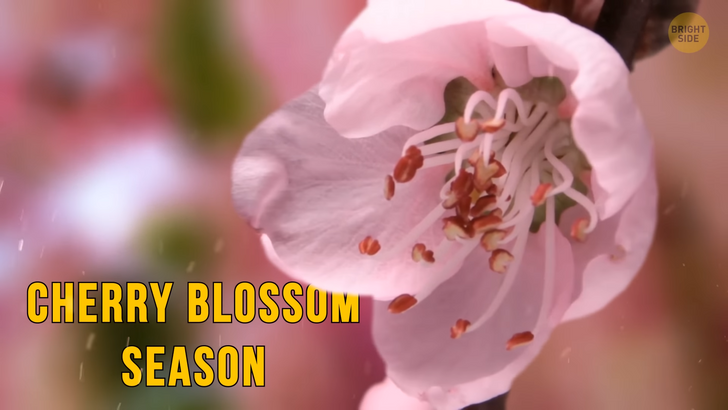13 Family Conflicts That Sound Straight Out of a Soap Opera


This spiky tree knows how to shoot, so you’d better stay away from it! It’s called a Sandbox tree, and you can find it in Amazonia. Initially, its seeds are formed in the shape of a small pumpkin. As time goes by, they harden and mature.
But here comes the fun part: just as they reach peak maturity, the seeds pop and shoot out at a speed of 150 miles per hour! They can even reach distances of 60 feet. That’s what makes it so risky to be in their way during the blast process. Not to mention the seeds are poisonous too! Hey, it’s a two-fer!

Sure, some trees don’t grow completely upright, but a tree that’s altogether bent — with its branches even touching the ground — is a sight not to be missed. Such a tree called the El Arbol de la Sabina grows in Spain. Its shape depends on the wind, as the tree bends in its direction. As a result, not only does it often have a weird shape, but it can also change it completely during different times of the year. This flexible tree can reach more than 26 feet in height and tends to grow in the most improbable of locations, like on rocks!
How about a tree that’s as old as dinosaurs? Discovered in 1994, the Wollemi Pine tree species can be seen in the Blue Mountains of Sydney, Australia. It dates back to over 200 million years, so it’s easy to believe dinosaurs might have roamed around it! Since these trees are endangered and only 100 exhibits exist to this day in the wild, the scientists don’t feel like disclosing their location. They want to make sure the trees are well-preserved. Also, they’re important for science, as studying them may help us uncover new information on the Earth’s past.

The bark of a tree can teach us many different things, like different temperature periods or exposure to various chemicals. The Tree of Life gets its name because it’s able to withstand difficult conditions and actually thrive. Located in the desert outskirts of Bahrain, The Prosopis Cineraria has a very deep root system, which allows it to survive in the scorching heat. The scientists still can’t find out how it manages to get sufficient water. It’s so special that it gathers over 50,000 tourists each year.
La India Dormida in Panama is a mountainous area that’s shaped like the body of a sleeping girl. It’s part of a bigger, mysterious region called El Valle de Anton — near one of the largest inhabited dormant volcanoes in the world. And it has some pretty weird trees too — square ones! Even the rings of these trees, meaning the interior of their trunks are the same shape, with sharp edges, sometimes even at a perfect 90-degree angle.
Researchers have tried to piece together why these trees grow in this particular shape. They even tried taking samples of some of the trees and planting them elsewhere, to see if they retain that shape. It wasn’t the case, so it’s clear that the odd shape of the trees has something to do with the valley itself. Some people believe that a local farmer might have originally planted the trees in boxes, forcing the trees to grow like that, to reduce lumber waste, since round trees often end up being cut in sharp-angled pieces.

One of the oldest and biggest trees in the world is found in the Sequoia National Park of the United States. It’s called General Sherman and stretches at 275 feet — it’s almost as big as the Statue of Liberty! Its circumference is equally as impressive, as near the ground it is around 102 feet. As for its age, we can only guess it to be between 2,300 and 2,700 years! That’s an old tree, ha!
There are a lot of beautiful species of trees out there, but none as striking as the Rainbow Eucalyptus, found in the Philippines. It almost looks hand painted, because of its multicolored layers of bark. This tree also shades its layers irregularly, which means it shows a lot of colors at once, from green to blue, then purple to orange, and then finally reaching brown. It’s not used for decorating purposes but rather for paper manufacturing.
Located in Namibia is a tree that’s also weird in shape and pretty dangerous: the Bottle tree. Ok, in terms of the shape, it’s pretty self-explanatory, with a round trunk that narrows down towards the top. But the milky sap harvested from the tree is extremely poisonous. Legend has it that local hunters used to dip their arrows in it for added efficiency. It does look really beautiful during bloom season, with flowers that grow in pink and white, with a red center.

To see a crooked tree every now and then isn’t so special, but to see a whole forest of them you’d have to travel to the Polish town of Gryfino. Near it, there is a forest made out of 400 oddly shaped trees. They’ve been curved with mechanical intervention — they didn’t just grow like that, but their purpose remains a mystery to this day. Some have said it’s because the wood from the trees was intended for furniture or even for the construction of boats, but either way, the forest was eventually abandoned.
A Silk Cotton tree has taken over the ancient Ta Prohm temples of Cambodia, creating a spectacular view. The massive branches of the silk cotton trees were free to grow over the structures for ages, going back as far as the 12th century. The temples have been restored and are accessible to tourists.
The Dragon’s Blood tree grows in the Canary Islands of northwest Africa. Locals used to say that once a dragon passes away, it transforms into a tree. Standing at an impressive 50 feet in length, the tree is named like that due to its red sap, which can be harvested from the bark. The red substance is to this day used for dyes and in medicine.

One of the biggest, oldest, and most impressive trees in the world is the Sunland Baobab tree. It’s 72 feet high and has a circumference of 155 feet. It’s located in South Africa. What makes it even more spectacular is the fact that it is naturally hollow inside! So, a small lounge was set up inside the tree back in 1933. It initially could support up to 20 individuals, but it can now host up to 60 people. Not to mention the tree dates back over 6,000 years!
The Silver birch tree spread across Scandinavia and North-Eastern Europe and found a way to reflect light. Its bark became lighter in color, and during the colder season when its branches also freeze over, the sight is something of a natural winter wonderland. It also developed a “partnership” with a fungus that connects to its roots and fans out under the forest, gathering up nutrients that trees can’t reach.
For these “services”, the tree gives the fungus sugars in return. The birch’s companion is dangerous and shouldn’t be consumed by people. It’s easy to recognize, with the classical scarlet-topped, white-sprinkled mushroom head.

A natural festival not to be missed is Japan’s cherry blossom season. The pinkish-white blossom is deeply rooted in Japanese culture, going hand-in-hand with a local saying called ’mono no aware’ which relatively translates to the fact that everything is temporary, regardless of how perfect or beautiful it is. Should you ever visit Japan, you’ll quickly see that the cherry blossom symbol is everywhere — from company logos to even clothing or household items.
Yosemite National Park USA once had an amazing tree structure that was turned into a tunnel. It was a Coast Redwood tree, stretching 227 feet tall. It was nicknamed Wawona — the Native American word for the hoot of an owl. The tree fell in 1969 because of heavy snow, but it survived as an ecosystem for animals, plants, and insects. It’s now called the ‘Fallen Tunnel tree’.
One tree species known as flsuufg beljgj iinf (well YOU can read it) is the rarest plant on Earth. The Guinness World Record book recorded one single tree of its kind, off the coast of New Zealand. It wasn’t always that lonely, but humans brought goats to the island, which nipped at every other member of its family. Luckily, scientists are looking at ways to plant new specimens. Well that’s all I have, so I’m going to make like a tree and “leave”. Ha!











